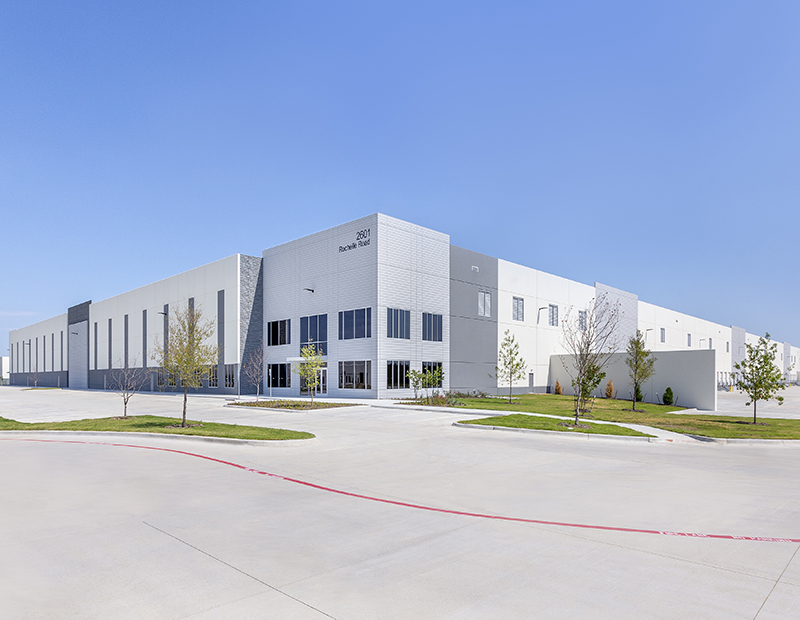Inside the Dallas Industrial Boom: Part I
In the first installment of a two-part interview, Stream Realty Partners' Sarah Ozanne explains why the market's industrial sector shows no sign of slowing down, even in the face of pandemic-induced obstacles.

Sarah Ozanne, Vice President of Dallas industrial, Stream Realty Partners. Photo by Brady Photography
The Dallas industrial market has continued to outperform other metros despite drawbacks in the commercial real estate sector caused by COVID-19.
With more companies choosing to move to and expand operations in the DFW market, we were curious to see what’s causing the surge and what to expect in the near term.
In part one of this two-part interview, Commercial Property Executive spoke with Stream Realty Partners’ Vice President of Dallas industrial Sarah Ozanne to explore why the city’s industrial market has been so successful, despite challenges brought on by the pandemic.
How has the Dallas industrial market changed over the last year?
Ozanne: In some ways, the market has changed pretty substantially and, in a lot of ways, it has just been business as usual for us. I say that really because, when you look at overall Dallas and DFW metro numbers for industrial, they continue to be very positive.
Construction continues to increase, absorption continues to increase and overall leasing activity is up. So with all of those trends, it’s been a strong industrial market for well over five, probably seven years at this point, so those things didn’t change.
On the flip side, what really changed was the world around us. The pandemic drove a huge change in consumer behavior and that largely was to industrial’s benefit.
What we saw was (in the case of) the users that needed warehouse space in the Dallas market, their requirements grew, and then users who perhaps had a bigger retail footprint started to shift their warehouse needs to meet e-commerce requirements. So we just saw a big uptick in e-commerce and consumer goods-related demand because of the change in that buying pattern.
How has COVID-19 impacted its performance?
Ozanne: Right out of the gate, no one was really sure what was going to happen this time last year and certainly for the second quarter and even into the third. We did see some decline, specifically from smaller tenants (of) 50,000 square feet or below. Those were a lot of regional and/or local owners and small businesses that either slowed down their business or their business remained stable but they had no clarity as to what might come on.
So, in terms of new requirements, renewals or expansions, we saw that the smaller size range did slow down a little bit throughout the spring and summer of last year.
But, on the flip side, we also noticed that the larger users (such as) Home Depot, Amazon, Walmart … had huge requirements (to) come to market, and so any decline that you might have seen on the smaller size range was well outweighed by these bulk requirements that came to market—and that leased space.
The other thing that we really saw was that third-party logistics companies, which were already a huge part of our business … had huge requirement increases because a lot of their existing customers needed more square footage and more capabilities … (On the other hand) a lot of companies that didn’t necessarily have a large e-commerce or distribution presence prior to COVID-19 had to get one.
Looking at vacancy rates, they did increase year-over-year and net absorption was a little bit lighter year-over-year—but when you look at overall leasing activity, 2020 was up about 10 million square feet over 2019, so there were certainly some shifting dynamics … (However) the overall picture, for the most part, has been an extremely busy market. There’s so much demand for warehouse space and that has been driven by a good economy and by the change in consumer patterns.
Why is there such a boom in the Dallas industrial market now?
Ozanne: Dallas has always been—or at least in the last 20 years—one of the top five to seven industrial markets in the country. So it’s never been a small market. Now it’s fighting for third or fourth place, but it’s never been a small market in terms of industrial products.
The answers to that on the front end are very obvious. We have a lot of land, so you can just keep building if you fill up the warehouses in the immediate metro.
But the things that I think ultimately make Dallas valuable and why it sees such great growth, (are)—first of all—the population growth in the state of Texas, specifically in north Texas. Looking at the statistics, we continue to be in one of the fastest-growing regions, if not the fastest-growing region,in terms of just population and company growth across the U.S.
With all of those people comes more demand for products—and that’s not just the stuff you’re ordering on Amazon. That’s also construction equipment supplies, regional plumbing services, or groups who provide products for construction of homes or repairs of homes. As the population comes, we just need more of everything, so that is one of the big drivers.
When you look at the Dallas location, we’re pretty centrally located. We’re a little south, but we’re right in the middle of the country; we’re about a 4-hour flight at most to each corner of the country, and most of those flights are shorter than that. We have I-35 that runs right through Dallas and Fort Worth, which gets you north to south, and we have I-20 that gets you east to west. In terms of transit, it’s extremely handy and we have an infrastructure—that is relatively young to the East Coast—so (Dallas has) very good highways and transit opportunity from a trucking perspective.
The final thing I would say is to look at the cost of doing business and the cost of living in Texas—which, while it is increasing, is still inexpensive relative to many of our competitors. When you think about other large industrial markets—New Jersey, Philadelphia, California, Chicago—the cost of living and the cost of doing business in Texas is substantially less. This is a driver for businesses that are looking to save money and looking to bring a good labor force at reasonable economics to their businesses.
How has the market changed over the last five years?
Ozanne: Speaking about the DFW market over the last five years, I think there have been a couple of things that have happened. One of the biggest things—and this may be a little bit technical—(was) a huge increase in the cost of industrial land. Just five or six years ago, to pay $2.85 or $3 per square foot felt kind of rich for land. Now we’re seeing comparisons at $7-$10 per square foot of land, so there’s been a huge increase, especially for infill, but even as you get further out.
Because the demand for industrial product continues to rise and because—as a real estate asset class—it continues to be so stable and so healthy, the price that developers are willing to pay for land has increased a lot.
Hand-in-hand with that, (we have seen) increased investor interest. Even thinking five years ago, we had a few clients that would always say: “I’ve got to bring my clients to town to show them Dallas and explain the market and sell them on why Dallas is so great.” Well, no one does that anymore.
Now, Dallas is where people want to be. We see a lot of companies that didn’t previously have acquisition managers now locating acquisition, personnel or offices here in Texas—specifically in Dallas—so that they can acquire property here. Any hesitation that there might have been five years ago about Dallas has definitely ended.
The final thing is that, since we’ve seen such great demand for industrial product in the region, cap rates are compressed and continue to go down, and building values continue to rise.
Check back for part II of our interview with Ozanne here.








You must be logged in to post a comment.